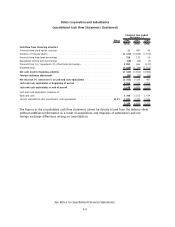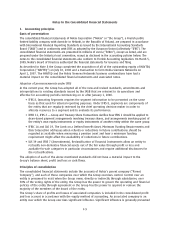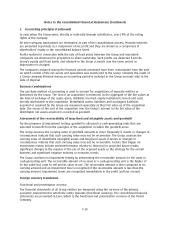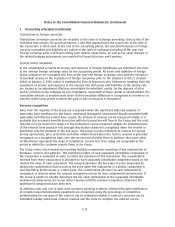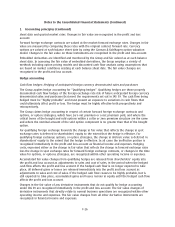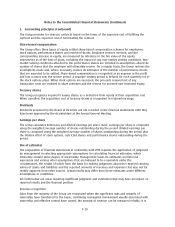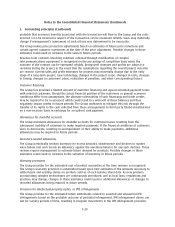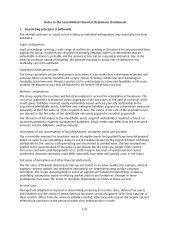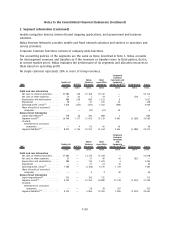Nokia 2008 Annual Report Download - page 159
Download and view the complete annual report
Please find page 159 of the 2008 Nokia annual report below. You can navigate through the pages in the report by either clicking on the pages listed below, or by using the keyword search tool below to find specific information within the annual report.1. Accounting principles (Continued)
Loans receivable
Loans receivable include loans to customers and suppliers and are measured at amortized cost using
the effective interest method less impairment. Loans are subject to regular and thorough review as to
their collectability and as to available collateral; in the event that any loan is deemed not fully
recoverable, a provision is made to reflect the shortfall between the carrying amount and the present
value of the expected cash flows. Interest income on loans receivable is recognized by applying the
effective interest rate. The long term portion of loans receivable is included on the balance sheet
under longterm loans receivable and the current portion under current portion of longterm loans
receivable.
Bank and cash
Bank and cash consist of cash at bank and in hand.
Accounts receivable
Accounts receivable are carried at the original amount invoiced to customers, which is considered to
be fair value, less allowances for doubtful accounts based on a periodic review of all outstanding
amounts including an analysis of historical bad debt, customer concentrations, customer
creditworthiness, current economic trends and changes in our customer payment terms. Bad debts
are written off when identified as uncollectible.
Financial liabilities
Loans payable
Loans payable are recognized initially at fair value, net of transaction costs incurred. Any difference
between the fair value and the proceeds received is recognized in profit and loss at initial
recognition. In the subsequent periods, they are stated at amortized cost using the effective interest
method. The long term portion of loans payable is included on the balance sheet under longterm
interestbearing liabilities and the current portion under current portion of longterm loans.
Accounts payable
Accounts payable are carried at the original invoiced amount, which is considered to be fair value due
to the shortterm nature.
Derivative financial instruments
All derivatives are initially recognized at fair value on the date a derivative contract is entered into
and are subsequently remeasured at their fair value. The method of recognizing the resulting gain or
loss varies according to whether the derivatives are designated and qualify under hedge accounting
or not.
Derivatives not designated in hedge accounting relationships carried at fair value through profit and
loss
Fair values of forward rate agreements, interest rate options, futures contracts and exchange traded
options are calculated based on quoted market rates at each balance sheet date. Discounted cash
flow analyses are used to value interest rate and currency swaps. Changes in the fair value of these
contracts are recognized in the profit and loss account.
Fair values of cash settled equity derivatives are calculated by revaluing the contract at each balance
F15
Notes to the Consolidated Financial Statements (Continued)



